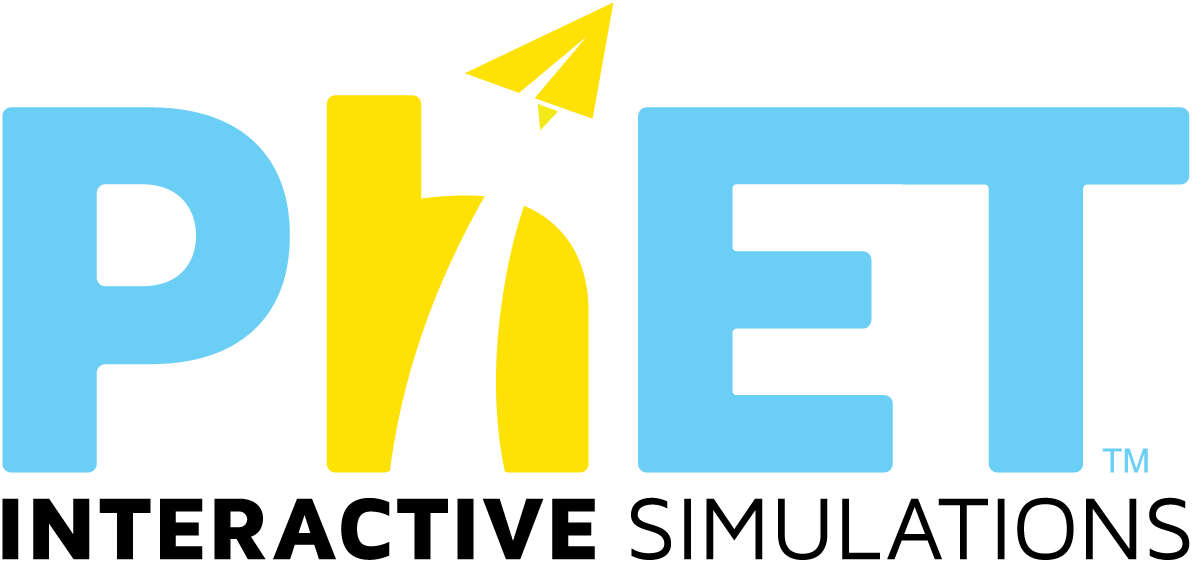Relationship between range સાથે મેળ ખાતા 384 શોધ પરિણામો
સિમ્યુલેશન્સ
- Blackbody વર્ણપટ - આર્ચી ખુંટ (HTML5)
- pH સ્કેલ (HTML5)
- અપૂર્ણાંક : શરૂઆત - ખુંટ આર્ચી (HTML5)
- અસ્ત્ર ગતિ - જીજ્ઞેશ ખુંટ (HTML5)
- આણ્વીય રચના - જીજ્ઞેશ ખુંટ (HTML5)
- ઊર્જાના સ્વરૂપો અને પરિવર્તન (HTML5)
- એકમ દર - જીજ્ઞેશ ખુંટ (HTML5)
- એસિડ-બેઇઝ દ્રાવણો - જીજ્ઞેશ ખુંટ (HTML5)
- કુલમ્બનો નિયમ - જીજ્ઞેશ ખુંટ (HTML5)
- કેપેશીટર લેબ : પ્રારંભિક - જીજ્ઞેશ ખુંટ (HTML5)
- કેપ્લરના નિયમો (HTML5)
- ક્રિયા કરાવો - જીજ્ઞેશ ખુંટ (HTML5)
- ક્ષેત્રફળ બનાવો - જીજ્ઞેશ ખુંટ (HTML5)
- ગુણોત્તર અને પ્રમાણ - જીજ્ઞેશ ખુંટ (HTML5)
- ગુરુત્વાકર્ષણ અને ભ્રમણકક્ષા (HTML5)
- ગુરુત્વાકર્ષણ બળ લેબોરેટરી - જીજ્ઞેશ ખુંટ (HTML5)
- ગ્રીન હાઉસ ઈફેક્ટ - જીજ્ઞેશ ખુંટ (HTML5)
- ગ્રેવીટી બળની પ્રયોગશાળા: મૂળભૂત બાબતો (HTML5)
- ઘર્ષણ (HTML5)
- ચતુષ્કોણ (HTML5)
- ચુંબક અને હોકાયંત્ર By જીજ્ઞેશ ખુંટ (HTML5)
- તારમાં અવરોધ (HTML5)
- ત્રીકોણમીતીય વિધેયો - જીજ્ઞેશ ખુંટ (HTML5)
- દળ અને સ્પ્રિંગ (HTML5)
- દળ અને સ્પ્રિંગ: બેઝિક (HTML5)
- દ્વિઘાત સમીકરણો નો આલેખ બનાવવો (HTML5)
- પદાર્થના સ્વરૂપો: પ્રારંભિક - જીજ્ઞેશ ખુંટ (HTML5)
- પદાર્થના સ્વરૂપો - જીજ્ઞેશ ખુંટ (HTML5)
- પરમાણુ આકારો: પ્રારંભિક - જીજ્ઞેશ ખુંટ (HTML5)
- પરમાણુ આકારો - જીજ્ઞેશ ખુંટ (HTML5)
- પરમાણુની આંતરક્રિયાઓ - જીજ્ઞેશ ખુંટ (HTML5)
- પ્રકાશને વાળવો - આર્ચી ખુંટ (HTML5)
- ફેરેડેનો નિયમ (HTML5)
- ફોરિયર: મેકિંગ વેવ્ઝ - જીજ્ઞેશ ખુંટ (HTML5)
- બીયરનો નિયમ - આર્ચી ખુંટ (HTML5)
- મધ્યવર્તી સ્થીતિમાન - ખુંટ આર્ચી (HTML5)
- મારું સૂર્યમંડળ (HTML5)
- મિશ્ર સંખ્યાઓના અપૂર્ણાંક (HTML5)
- મોલારિટી - જીજ્ઞેશ ખુંટ (HTML5)
- રાસાયણિક સમીકરણોનું સંતુલન (HTML5)
- રુથરફોર્ડનું વિખેરણ મોડેલ - જીજ્ઞેશ ખુંટ (HTML5)
- રેખા બનાવો - આર્ચી ખુંટ (HTML5)
- લઘુત્તમ-ચોરસ રીગ્રેસન (HTML5)
- વલય આલેખ - આર્ચી ખુંટ (HTML5)
- વાયુઓ પ્રસ્તાવના (HTML5)
- વાયુના ગુણધર્મો (HTML5)
- વીજભાર અને તેના ક્ષેત્રો - આર્ચી ખુંટ (HTML5)
- સંખ્યા રેખા: અંતર - જીજ્ઞેશ ખુંટ (HTML5)
- સંખ્યા રેખા : ગાણિતિક ક્રિયાઓ - જીજ્ઞેશ ખુંટ (HTML5)
- સાંદ્રતા - જીજ્ઞેશ ખુંટ (HTML5)
- હૂકનો નિયમ (HTML5)
- Capacitor Lab
- Conductivity
- Eating & Exercise
- Electric Field of Dreams
- Fourier: Making Waves
- Lunar Lander
- Magnets and Electromagnets (HTML5)
- Models of the Hydrogen Atom (HTML5)
- Models of the Hydrogen Atom
- Simplified MRI
- Normal Modes
- Photoelectric Effect
- Plate Tectonics
- Quantum Coin Toss (HTML5)
- Quantum Measurement (HTML5)
- Quantum Tunneling and Wave Packets
- Quantum Wave Interference
- Reactions & Rates
- Resonance
- Reversible Reactions
- Stretching DNA
- Torque
પ્રવૃતિઓ
- Projectile Motion report
- Relationship between electricity and magnetism
- Projectile Motion
- Projectile motion, range, time, velocity
- Experiment to determine relationship between wavelength, frequency and speed
- The Relationship between the Volume of a Gas and its Pressure - Boyle's Law
- Relationship between frequency and mass, k, and g
- Projectile Motion
- Investigating the relationship between field and potential around point charges
- Projectile Motion Experiment Abdulla
- Horizontal Release Projectile Relationships
- Hooke's Law investigation including multi-spring systems and Energy
- Investigation of a Solution’s Color (Qualitative) - Guided Inquiry Activity
- Intro to Waves I: Basics of waves in liquids
- Density Investigation
- Exploring Slope and Speed
- Slope and Speed (revised)
- Interpreting Chemical Symbols
- Exploring Electric Potential, Electric Field and Distance Relationships
- projectile motion
- projectile motion worksheet
- Determination of angle of projection for maximum range
- Exploring Boxplots and IQR
- Projectile Motion Worksheet
- Molecule Polarity - Guided Inquiry Activity
- Exploring How Light Behaves at Boundaries
- Maxwell-Boltzmann Distribution Curves
- Patterns and Ratios
- Wave Modeling and Wave addition (Inquiry Based)
- PROJECTILE MOTION LAB REPORT
- projectile motion
- Projectile Motion Lab Report
- Projectile motion – Complementary Angles and Range
- A Projectile Motion-Introduction (Inquiry Based)
- Resonance: Upper-division college
- Introduction to energy- a chemical context
- Investigation of a Solution’s Color (Qualitative and Quantitative) - Guided Inquiry Activity
- Ramp: Forces and Motion Investigation
- Parallel Circuit Electrical Relationships
- Projectile motion
- Projectile Motion
- project motion
- Pushing Things Around
- Gravity Between Bodies
- Predator Prey Relationship- Survival
- Energy Skate Park
- 3 Activities for Kepler's Laws of Planetary Motion
- Linear Relationships - 7th Grade ASC
- Net Forces and Newton's Second Law
- The Covalent Bond Between Two Atoms
- projectile motion
- Projectile launch angle vs displacement
- projectile motion
- projectile
- Projctile motion
- Projectile Investigation
- pH and the Dissociation Constant
- Roller Coaster Creation
- Atoms 3: Electron Configurations
- forces and motion basics
- friction and acceleration
- Force, Mass, Acceleration
- Gravity Force Lab for Physical Science
- On the molecular level, what is the difference between acids and bases?
- Initial Magnetism Investigation (Inquiry Based)
- Projectile
- Projectile Motion-Using kinematic equations
- Horizontal projectile motion
- Conservation of Mechanical Energy
- Conservation Of Mechanical Energy
- Lab Experiment
- Projectile motion
- Circuit Inquiry Lab
- projectile motion
- Series Circuit Simulation
- Air Resistance Lesson
- Series Circuits Electrical Relationships
- Equipotential Surfaces Lab Activity
- Projectile worksheet
- Ohm's Law Graphing Lab
- Energy in a Skateboarder-Conservation of Energy
- Investigating Electric Fields
- Kinetic, Potential and Total Energy: Claim, Evidence, Reasoning
- KE and PE using the Pendulum Lab
- Parallel Circuit Electrical Relationships
- Conservation of mechanical energy.
- Hot Air Balloons Lesson
- Properties of Waves - Lab Guide
- Projectile Motion
- Projectile
- Projectile Motion Lab Report
- Projectile Motion
- Newton's Second Law
- Resistance and Resistivity
- Atomic Spectra and the Composition of Stars
- Speed of a Mechanical Wave
- Lab: Electric Field and Potential
- Density-MS
- Balanced & Unbalanced Torque Webquest
- Exploring MAD
- Trig Tour - Connecting the Unit Circle to the Graph
- Projectile Lab (Horizontal Launch)
- Projectile Lab (Angled Launch)
- Projectile Motion
- Projectile Motion
- Projectile Guided Inquiry
- Weak vs. Strong
- Hooke's law
- Introduction to Forces in 1-D
- Action Potential Simulation - Guided Inquiry Activity
- Projectile Motion
- Electric field - patterns and strength
- Balancing Chemical Equations
- Intro to Ohm's Law
- Online lab - Wien's law
- Bond Polarity vs Molecule Polarity
- Deriving Gas Properties
- Hanging Mass
- Potential Energy of A Spring (Elastic Potential Energy)
- Electric Field vs Electric Potential
- Ohm's Law and Resistance Virtual Lab
- PHET Charges and Fields Activity Part 1
- Bohr's Model of the Hydrogen Atom
- Ohm's Law
- PhET Student Interactive Introduction on Capacitance & Dielectric Constants
- How are products and factors related?
- Calculus Grapher: Relating motion graphs to calculus graphs
- Molarity: Quantitative Relationships
- The Meaning of pH
- Circuit connection (differences between the current readings and the voltage readings of circuit connected in series and parallel).
- Skate Park Phet- Science 8 and ACC Science 8
- Spinometer
- Concentration - Interactive Lecture Demonstration
- pH Scale Basics Remote Lab1
- Build an Atom
- PhET - Explore Absolute Value on the Number Line Distance Activity
- Gravitational Force and Orbits
- Waves on a String Exploration Activity Guide
- Investigating the Parameters of Circular Orbits
- Investigating Resistance in Circuits
- Atomic Interactions PhET Exploration - with Coulomb's Law application
- Up and Down
- Conservation of Mechanical Energy
- Light and Atoms
- Newton's Second Law Investigation
- Travoltage Lab
- Guided Inquiry - Electric Fields
- Modelling Motion
- Capacitor Lab: Basics: Inquiry into Capacitor Design
- Modeling Paradigm Lab- 2nd Law
- BendingLight_Remote_Lab
- Wave Interference Lab: Path Difference impact on Constructive and Destructive Interference
- Reactions and Rates 3: Introduction to Equilibrium (Inquiry Based)
- Isotopes and Atomic Mass - Guided Inquiry Activity
- Vector Addition 1: Introduction to vector math (Inquiry Based)
- Electrolyte and Non-electrolyte Solutions - Interactive Lecture Demonstration
- Coulomb Law Remote Lab
- pH Scale inquiry-based intro to acid-base
- Plate Tectonics Inquiry
- Build an Atom - Guided-Inquiry Activity
- Reactions and Rates 2: Intro to Kinetics (inquiry based)
- Gas Properties Modular Homework Activity
- Gravity Lab- intro
- Capacitor Lab: Inquiry into Capacitor Design
- Molecule Polarity- Inquiry and Applications
- States of Matter - Lab Simulation - student procedures and questions
- Exploring (proportional) Density
- Fencing Spaces: Fixed Perimeter, Changing Area
- Hooke's Law and the Spring Constant
- Saat Energi menjadi Jejak Petualangan untuk dijelajahi
- Ideal Gas Law Activity
- Worlds of Wonder
- 3 Projectile Motion Factors
- Projectile motion
- projectile motion
- A PhET-Based Laboratory Activity in Teaching Direct Current Circuits (Guided Inquiry with Formative Assessment)
- Finding Unit Rates Using Addition, Subtraction, Multiplication, and Division
- Horizontal Launch Investigation
- Projectile Motion Scientific Enquiry
- Projectile Motion
- Capacitor_Lab_Basics _html_Remote_lab
- Reactions and Rates 1 Introduction to reactions (Inquiry Based)
- What Factors Influence the Rate of a Reaction?
- Balloons and Bouyancy: An Introduction to Bouyancy - (Inquiry Based)
- Circuit Activity 2 Series & Parallel Circuits (Inquiry Based)
- Making Meaning of Improper Fractions and Mixed Numbers
- My mystery number
- Day 2: Exploring Kinds of Circuits (Series/Parallel)
- Balloons and Static Electricity
- Entropy, Microstates, and Probability - Interactive Lecture Demonstration Guide
- Build an Molecule - Inquiry-based basics
- Go the Distance!
- Kinetics Guided Inquiry
- Circuit 1 Properties of Electric Circuits (Inquiry Based)
- Balanced and Unbalanced Forces - What Causes Acceleration
- Pressure vs Temperature for Ideal Gases
- Intermolecular Forces and Molecules - Interactive Lecture Demonstration
- Intermolecular Forces and States of Matter - Interactive Lecture Demonstration
- Geometric figures
- Virtual Density
- Conservation of Linear Momentum
- Projectile Simuation
- Projectile Data Lab (with CODAP) Lab 3 of 3: Advanced topics in measurement uncertainty
- PhET Projectiles Simulation Lab
- Natural Selection PhET Simulation
- To study the dependance of time period on (i) length of the pendulum and (ii) acceleration due to gravity
- Electrical Potentials Lab
- Capacitor Building Guided Inquiry
- Period of Pendulum
- Exploring electric charges
- Electric Field Activity
- Colission Lab colorado
- How are greenhouse gases different from non-greenhouse gases?
- Online Lab Series/Parallel Circuits
- An investigation into Building Electric Circuits (Inquiry Based)
- Capacitor Design Remote Lab
- Batteries in series and parallel
- Properties of waves
- Friction Investigation
- Application of The First Law of Thermodynamics
- Ohm's Law Relationships
- Discovering Newton's Universal Law of Gravitation
- Chemistry - Introduction to Coulomb's Law
- Determinine Electric Field Relationships
- 2nd Law Simulation Lab
- Comparing Fractions with Like Numerators and Denominators
- Series, parallel circuits
- Faraday's Electromagnetic Lab
- Discovering Series Circuits
- Projectile Motion: The Basic Flight Path
- Data Detective
- Charges and Fields Exploration
- Determination of Molarity
- The capacitance of a parallel-plate capacitor, effects of dielectric in a capacitor
- Gas Properties Simulation
- Movimiento Armonico Simple: El pendulo y el resorte (Simple Harmonic Motion:pendulum and spring
- Exploring Pressure
- Capacitors and Dielectrics
- Visualizing Resistance
- Line of best fit activity
- Build a Molecule Basics
- GAS LAW - BOYLE'S LAW
- Exploring parallel and perpendicular lines
- Exploring Gas Laws Using Data
- Gravity: Friend or Foe?
- Conservation of Linear Momentum
- Projectile Motion
- Exploring Nuclear Fission
- Exploring Linear Functions
- Electric Field Hocket
- pH Relationships
- Combination Circuits and Kirchoff's Laws
- Electric Field Lab
- Analyzing 2D Collisions
- Fission: controlled vs. uncontrolled
- Inputs and Outputs in Unit Operations
- Friction on Incline
- States of Matter Basics Student Guide
- Exploring EM Forces
- Projectile motion lab report
- universal Gravitation
- Spring Mass Experiment
- Launching Pumpkins - Solving Quadratic Functions
- Density-introduction
- Behavior of Semiconducting Materials
- Circuit Construction Kit (DC Circuits) PhET Lab
- PhET Buoyancy Lab Student Worksheet - Exploring Density, Gravitational Forces and Buoyant Forces
- Ion Formation
- Coulomb's Law Lab
- Density and Earth's Crust
- Binomial Distribution
- Circuit Builder: Parallel and Series Circuits
- Projectile Motion
- Discovering Snell's law
- Coulomb's Law for Chemistry
- Moving Man (Motion Intro)
- Conservation of Linear Momentum
- Isotopes and Atomic Mass Phet Simulation Guided Inquiry
- Sound Wave Introduction
- Vector Addition Worksheet
- Waves on a String Discovery Activity
- Newton's Gravitational Constant Calculation
- Heat or temperature?
- Using the Gases Intro PhET Simulation: Concept Development for Understanding Gas Laws and the Variable Changes Associated with Them
- Vector Addition Experiment
- 'Lectronic Plates
- Heat or temperature
- Discharge Lamps and Electron Transitions
- Acid-Base WebLab PhET HTML5
- Exploring Electric Charges
- Universal Gravity-building formula, quantitative with graphing
- Exploring Vectors and Projectile Motion
- Exploring the pH Scale
- Plinko Probability for Long-Run Frequencies
- DC Measuring Devices
- Wave pre-lecture introduction for regular level
- Activity: Wave on a String
- Friction Investigation
- energy systems phet worksheet
- Intro to Circuits
- Charge and Energy Conservation in Circuits Inquiry
- ChemActivity: Phase Changes and Intermolecular Forces
- Exploring Static Electricity
- Projectile Motion Virtual Lab Activity
- Wave Interference- Waves (Sound and Light)
- Adding Vectors Visually and Mathematically - Intro
- The Two-Slit Experiment
- Static Pressure
- Introduction to Waves: Liquid Matter, Sound, and Light
- Coulomb's Law Data Collection and Analysis (remote online learning)
- Online Assignment 4 Ms & Ss


